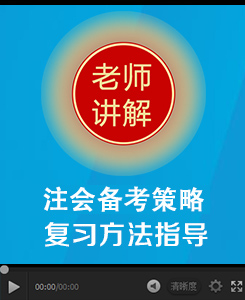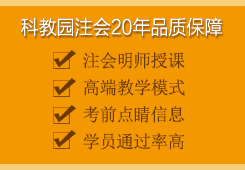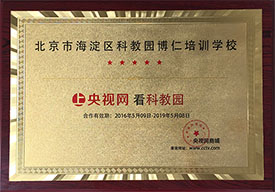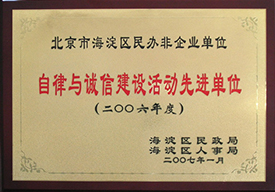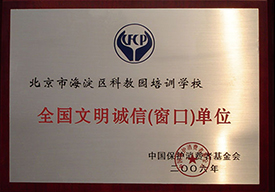对于注册会计师的考生,同学们不仅要做好各个科目知识点的复习,把握住英语题型的测试同样重要。接下来,科教园注册会计师辅导班的老师就会为大家带来各个科目的英语学习方法和一些使用技巧,望同学们不要在英语上失分。
1.Accounts Payable: Sales: Accounts Payable pided by Annual Sales, measuring the speed with which a company pays vendors relative to sales. Numbers higher than typical industry ratios suggest that the company is using suppliers to float operations.
2.Assets: Sales: Total Assets pided by Net Sales, indicating whether a company is handling too high a volume of sales in relation to investment. Very low percentages relative to industry norms might indicate overly conservative sales efforts or poor sales management.
3.Current Liabilities: Inventory: Current Liabilities pided by Inventory: A high ratio, relative to industry norms, suggests over-reliance on unsold goods to finance operations.
4.Current Liabilities: Net Worth: Current Liabilities pided by Net Worth, reflecting a level of security for creditors. The larger the ratio relative to industry norms, the less security there is for creditors.
5.Current Ratio: Current Assets pided by Current Liabilities, measuring current assets available to cover current liabilities, a test of near-term solvency. The ratio indicates to what extent cash on hand and disposable assets are enough to pay off near term liabilities.
6.Fixed Assets: Net Worth: Fixed Assets pided by Net Worth. High ratios relative to the industry can indicate low working capital or high levels of debt.
7.Gross Profit: Sales: Pre-tax profits pided by Annual Sales. This is the profit ratio before product and sales costs, as well as taxes. This ratio can indicate the "play" in other expenses which could be adjusted to increase the Net Profit margin.
8.Net Profit: Sales: After tax profits pided by Annual Sales. This is the key profit ratio, indicating how much is put in the company's pocket for each $100 of sales.
9.Quick Ratio: Cash plus Accounts Receivable, pided by Current Liabilities, indicating liquid assets available to cover current debt. Also known as the Acid Ratio. This is a harsher version of the Current Ratio, which balances short-term liabilities against cash and liquid instruments.
10.Return on Assets: Net After Tax Profit pided by Total Assets, a critical indicator of profitability. Companies which use their assets efficiently will tend to show a ratio higher than the industry norm.
11.Return on Net Worth: Net After Tax Profit pided by Net Worth, this is the 'final measure' of profitability to evaluate overall return. This ratio measures return relative to investment in the company. Put another way, Return on Net Worth indicates how well a company leverages the investment in it.
12.Return on Sales: Net After Tax Profit pided by Annual Net Sales, indicating the level of profit from each dollar of sales. This ratio can be used as a predictor of the company's ability to withstand changes in prices or market conditions.
13.Sales: Inventory: Annual Net Sales pided by Inventory value. This gives a picture of how quickly inventory turns over. Ratios below the industry norm suggest high levels of inventory. High ratios could indicate product levels insufficient to satisfy demand in a timely manner.
14.Sales: Net Working Capital: Sales pided by Net Working Capital (current assets minus current liabilities). Ratios higher than industry norms may indicate a strain on available liquid assets, while low ratios may suggest too much liquidity.
15.Total Liabilities: Net Worth: Total liabilities pided by Net Worth. This ratio helps to clarify the impact of long-term debt, which can be seen by comparing this ratio with Current Liabilities: Net Worth. Creditors are concerned to the extent that total liability levels exceed Net Worth. The impact of long-term debt
16.Turnover Ratios: Sales pided by various line items (cash, accounts receivable, accounts payable, inventory, current assets, total assets, fixed assets).These turnover rations measure operating characteristics of firms. Higher is better for Asset line items. Lower is better for Accounts Payable Turnover. Turnover ratios create a series of operating efficiency indicators relative to sales.
更多注会考试帮助信息,请参见科教园注册会计师交流!
科教园2012注会辅导班招生活动已经火热展开!丰富的办学经验、雄厚的师资力量、权威的押题质量、较高的学员通过率一直是我们的骄傲!科教园注会自始至终坚持“高质量,高水准,高信誉”的教学服务理念,全力打造一个优秀的学习环境,力求每位学员顺利通过考试。科教园注会——注会面授老品牌,您学习与事业的指路明灯!





